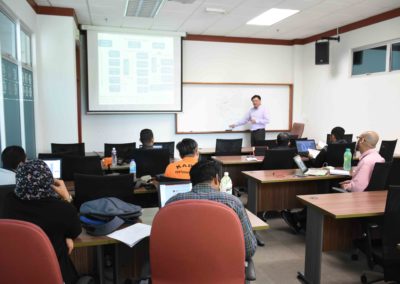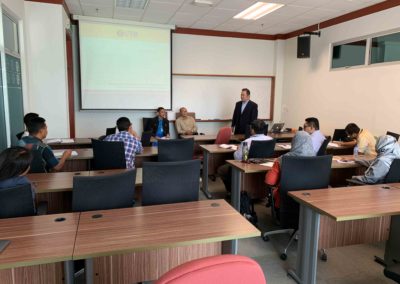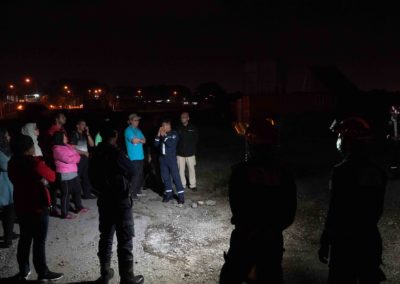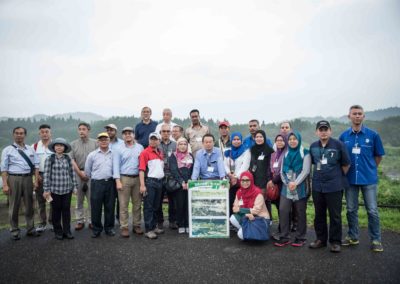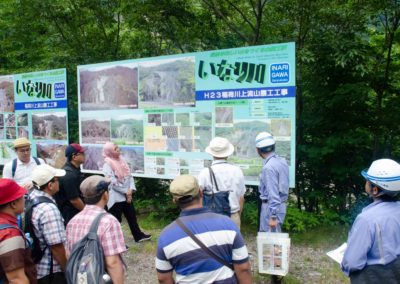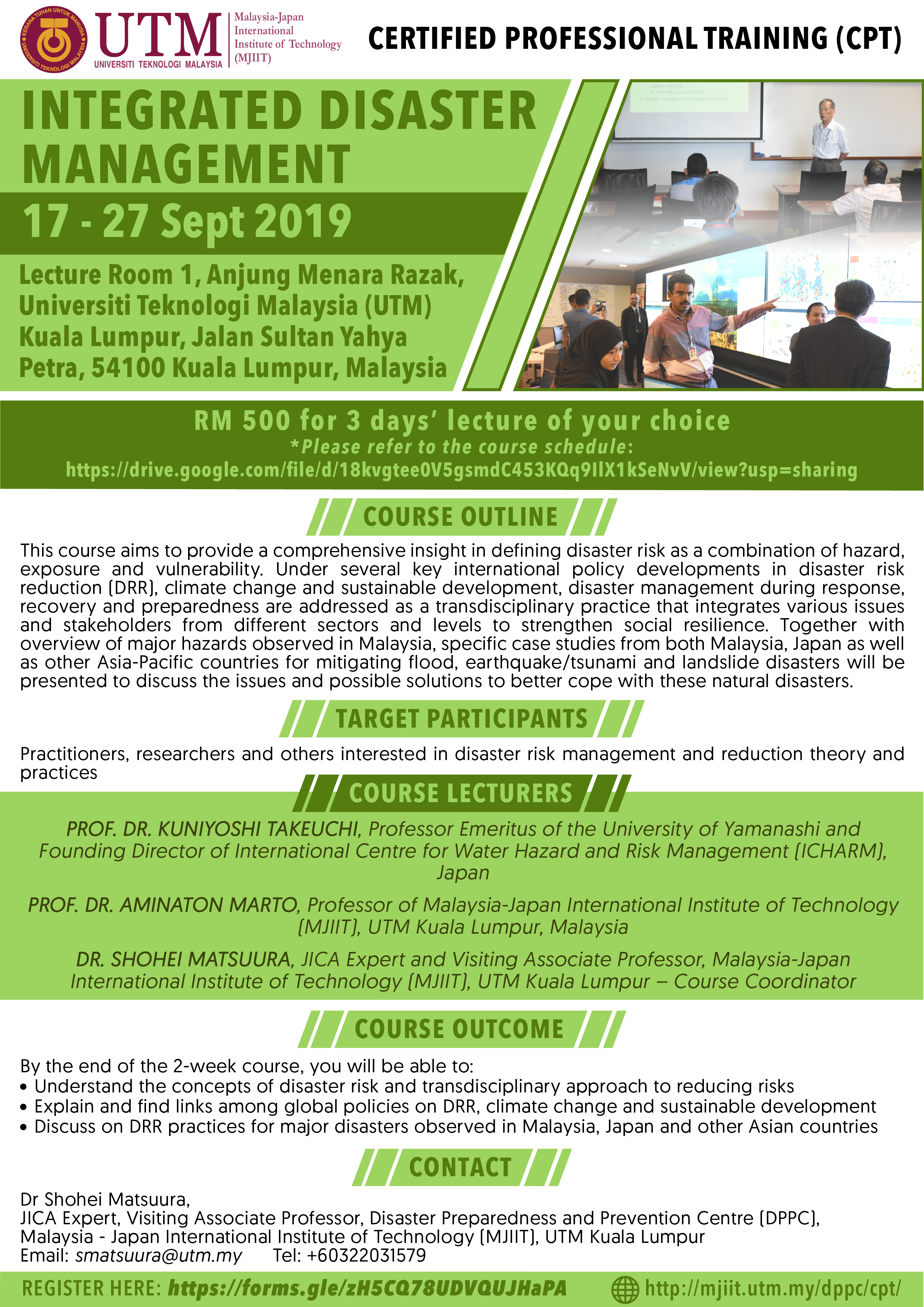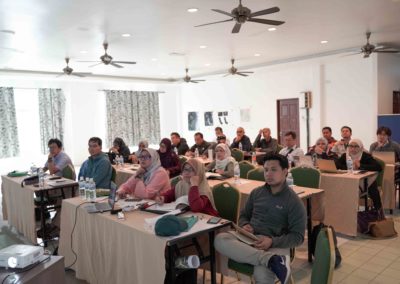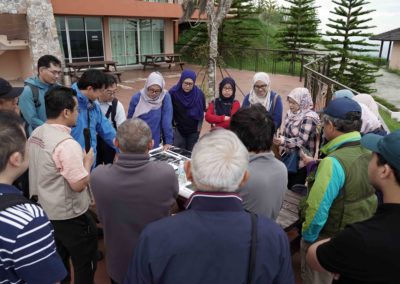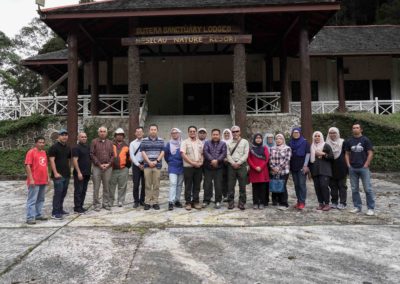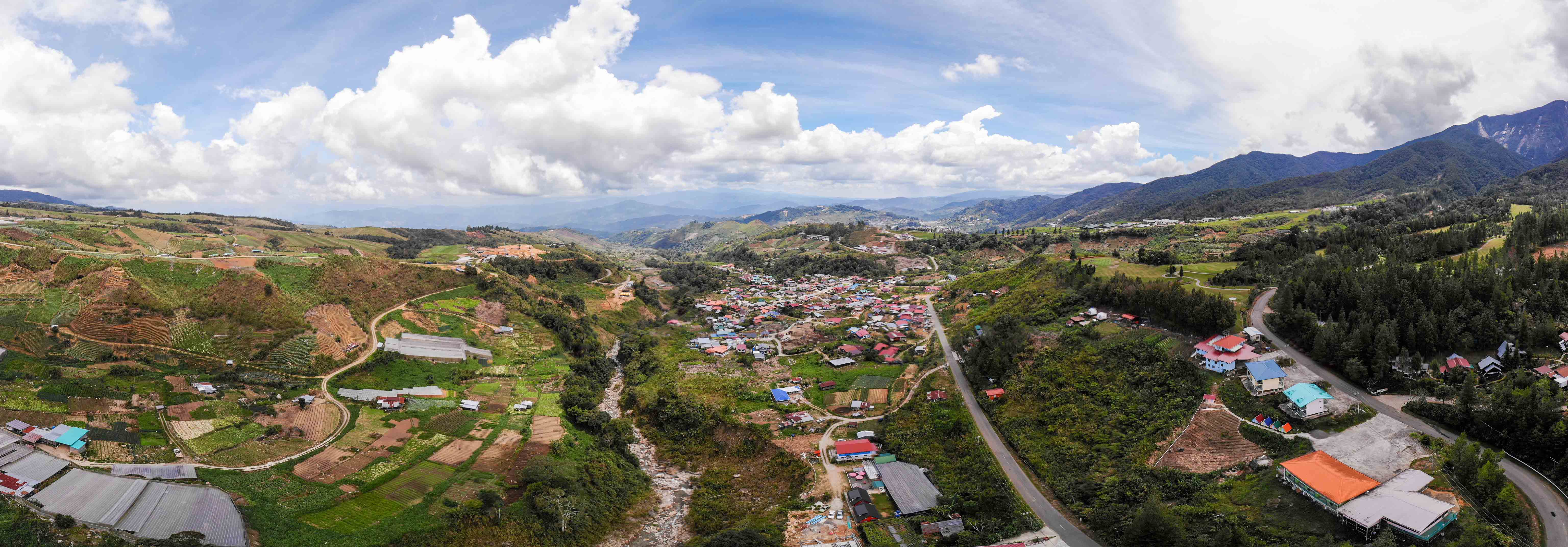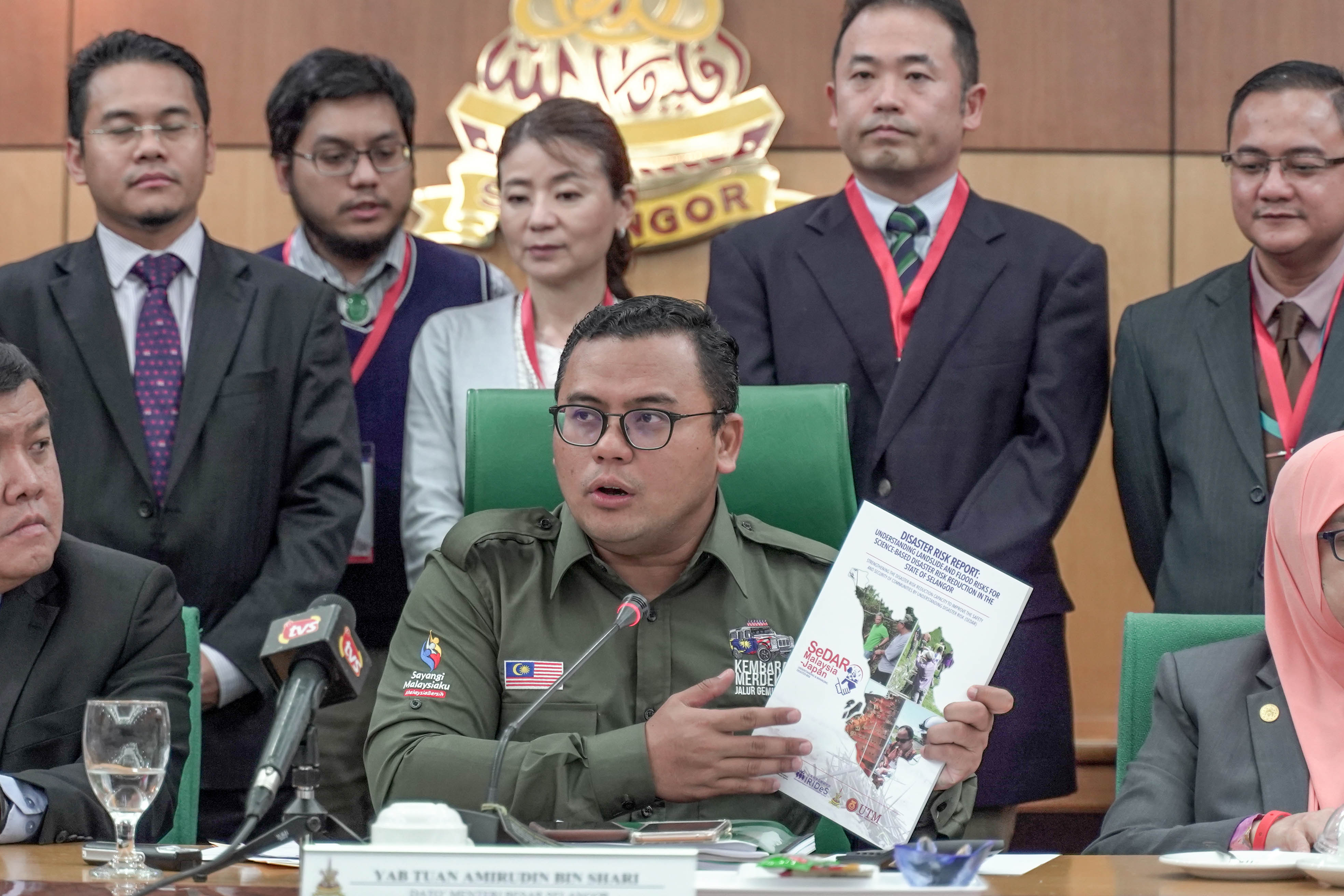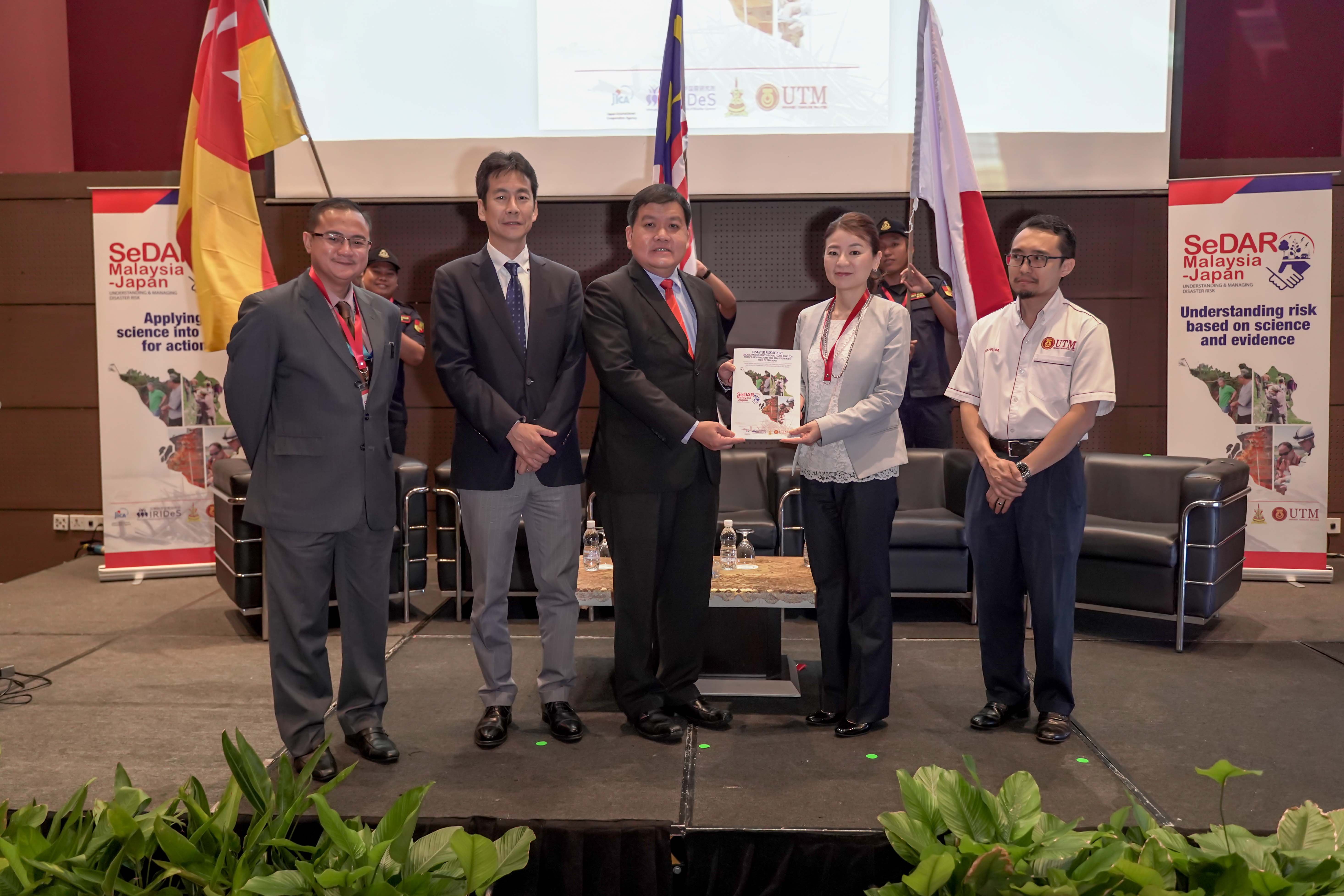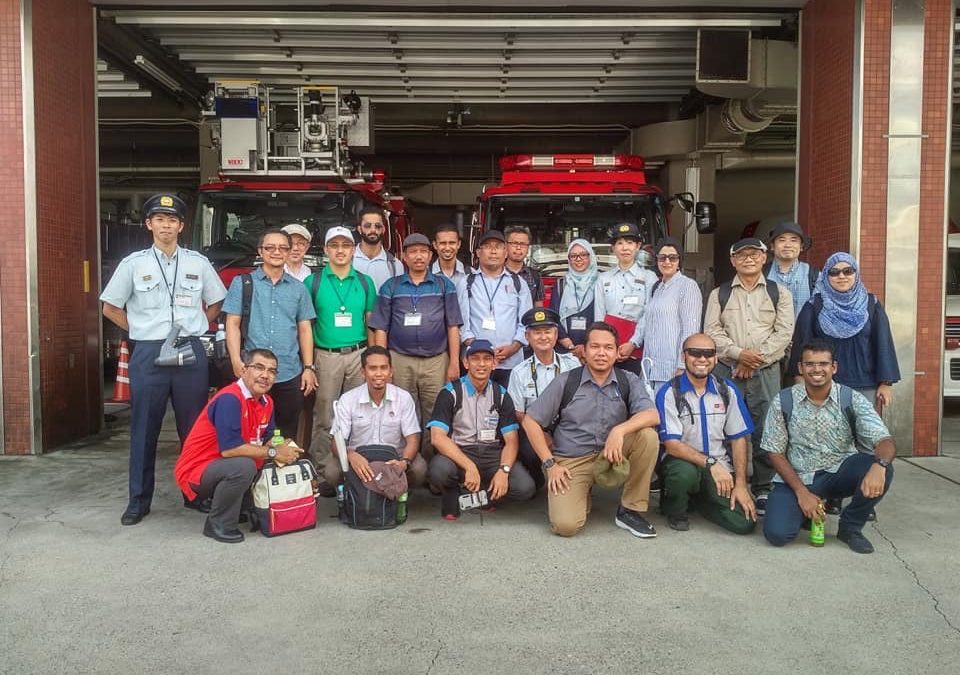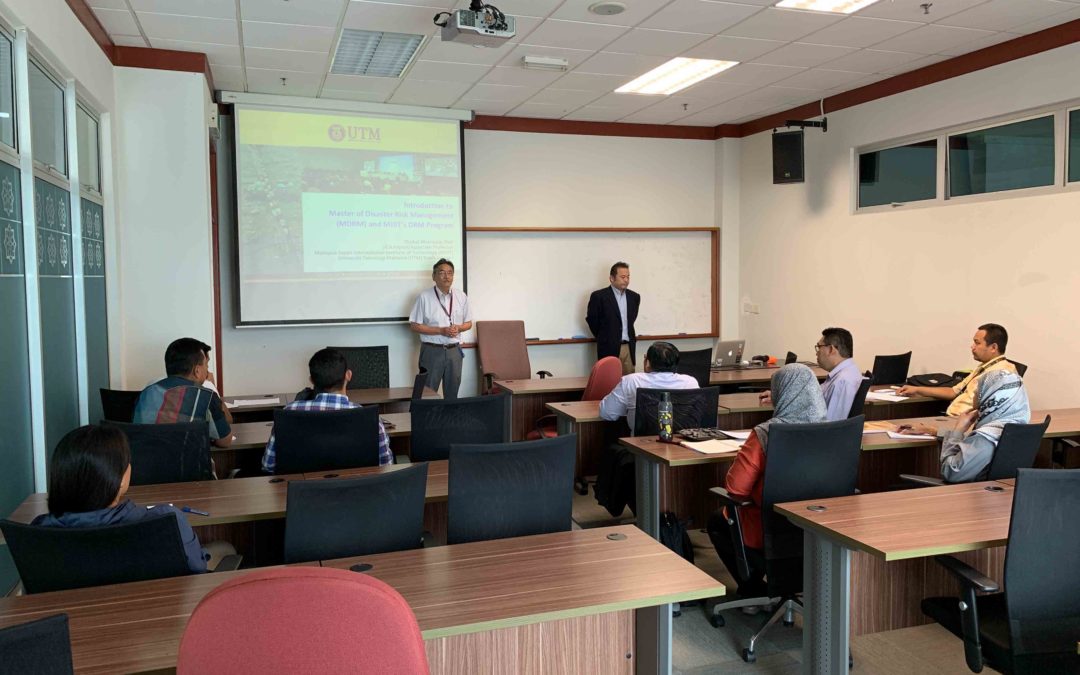
4th Year of Master of Disaster Risk Management (MDRM) Program
On 17 September, the 4th year of Master of Disaster Risk Management (MDRM) Program started with introductory lecture from Assoc. Prof. Dr. Shohei Matsuura, JICA Expert on the short history of MJIIT’s DRM program and MDRM. This was followed by a series of lectures by Prof. Emeritus of Yamanashi University and Founding Director of ICHARM, Kuniyoshi Takeuchi on the basic concepts of disaster risk and global trends in disaster risk reduction and management (DRRM).
The MDRM program is suitable for working professionals in the field of environmental and disaster management who wants to further develop their professional knowledge and skills in DRRM as well as aspiring students who wish to become future leaders in the field of DRRM. The program offers lectures and activities offered by prominent Malaysian and Japanese experts, together with all-sponsored 2-week Japan Attachment program.
- Why choose MDRM?
-Transdisciplinary approach to DRRM
MDRM offers a comprehensive and unique set of academic and practical knowledge and skills in DRRM that is not available elsewhere; similar programs only offer contents that are confined in a single discipline (e.g. civil engineering, social science, medical). MDRM program is offered in a module courses that includes both technical (e.g. flood modeling and forecasting) and policy (e.g. CBDRR, recovery planning) issues. Program like MDRM can only be implemented by a team comprised of experts from various fields that understands the importance of transdisciplinary approach for DRRM.
-We do not teach professionals what they already know
MDRM does not attempt to teach professionals with knowledge that they already know. Instead, we provide tools and knowledge with good balance of academic and practical contents to enhance their technical and analytical skills so that graduates will be able to make evidence-based decision-making and planning once they return to their work. For example, we require professionals in emergency response to learn about developing flood hazard maps with GIS and flood modeling and for geotechnical engineers to be exposed to community-based DRR.
-Learning from Japan – a shopping mall of disasters
Japan is known for being a “shopping mall” of disasters that has experienced and recovered from some of the world’s most costly and devastating disasters. Through this experience, Japan had established itself as the leader in disaster prevention and preparedness. Japan has hosted all of the world conferences for DRR (Yokohama, Kobe, Sendai) and contributed significantly to the global DRR frameworks that are helping the world to become a safer place from disasters. In this spirit, the program aim to bring some of the key knowledge and experiences from Japan to be shared in MDRM.
-Learning and networking with fellow DRRM professionals
One of the significant characteristics of MDRM program is that the students are all experienced DRRM professionals from various backgrounds. Because lectures are conducted in an interactive environment, the students can freely start a discussion with his/her lecturers and fellow students. As such, MDRM students are able to learn not only from their lecturers, but also from their classmates. In addition, the linkage established during MDRM often leads to collaborations among department and agencies after students go back to work after graduation.
-It is not just about getting a degree
If you are seeking only to get a degree to write on your resume, perhaps there are easier options elsewhere. MDRM is an intense program with lectures, fieldwork, assignments and masters project. We also challenge students to explore outside of their “comfort zones” because that is the only way to strengthen knowledge and skills that could bring a societal change for disaster resilience. The MDRM team welcomes those who seek to become a true expert and leaders in the area of disaster risk reduction and management.
